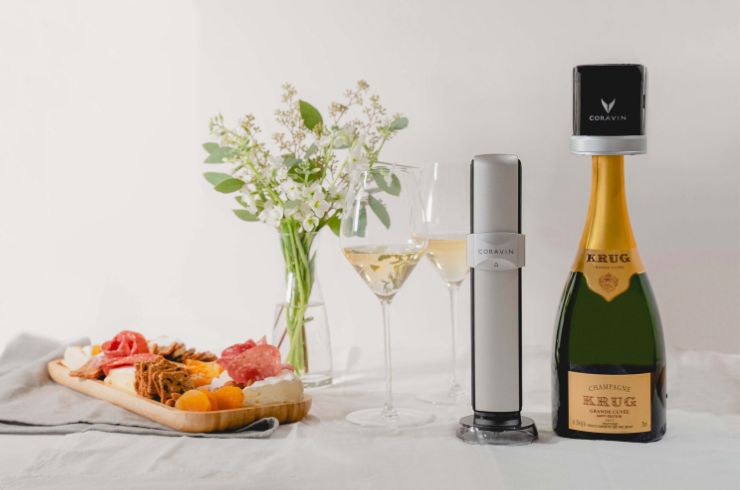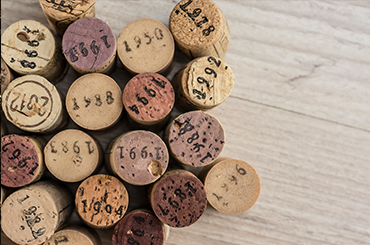In early autumn 2004, I moved 500-odd bottles of carefully cellared wine from a locker at a storage facility in Melbourne to our new home in rural Victoria. The property had space aplenty and a double garage begging to be stuffed with wine, but no obvious or easy area to stash wine for the long term. Winter was freezing, so both the wine and me slept through. In spring we thawed. Then, on the cusp of summer, hot weather hit and I panicked. The wine became my equivalent of Private Ryan. It needed to be saved.
The new house was both inland and north of the great Dividing range; in summer this translates to cold nights and almost uniformly hot, dry days. Wine that is going to be stored for any length of time needs to be kept in dark, cool conditions, but most especially it likes to be kept constant. This is why some people stuff cases of wine under their beds; not to mention the convenience. I had moved to an area where the only constant was change. In early summer the nights are sub-10 degrees, the days 30-plus.
I was, of course, familiar with this version of panic, so I knew my options, or most of them. I was very keen on the biggest size of kitchener wine cabinet, or even two of them. I also contemplated a room-with-no-view, like a Russian doll of sorts, built within the garage as an above-ground climate-controlled cellar. I looked seriously into shipping containers of the reefer/refrigerated variety, with a view to having one carted from the sea to the mountains to the back of our property and fitted with racks. And, given that our block of land sat on three distinct levels, I even investigated either having a cellar dug straight into one of the hillsides, or a tank sunk sideways and then covered over with earth. This last option could double as a bushfire shelter; if it failed at this latter task I’d go down in a sea of mulled wine. I could see the headline: Marinated Wine Writer Found Cooked in ‘Cellar’.
Many of these ideas were based on the thinking that we would never move house, that our needs and tastes would remain as constant as the perfect cellar.
I called in a local builder, as such options fermented, and after we discussed the various possibilities, he fatefully asked: would you be interested in a cool room?
Would I. Turns out there’d been a religious cult of sorts operating at a private property nearby, hidden behind a thick hedge of rhododendron, and it had recently come unstuck. They were having a fire and brimstone sale; everything must go. In the sale was a large refrigerated cool room. The builder said this local cult was known as the Church of the Firstborn, but I think he was wrong on that… Although, given how many people – usually but not exclusively men – start and build a cellar around the same time as they start to think about having children, I could see the poetry of buying a cool room from the Not Firstborn Folk.
Here I would I worship wine, which I’d been known to fret over as if these bottles were my children. promptly then, the builder attended the auction, had a concrete slab poured at the back of our property, and then booked a crane and driver to lift it, fully intact, over large-ish trees and onto said slab. I’ll never forget the sight of it, dangling high in the air, all thick walls and cultish ghosts, as it twisted and swayed and then, with a worrying bang, belly-whacked onto the concrete. There the Cellar of the Firstborn rested in peace until March this year.
If you really wanted to, this cool room could easily fit a couple of thousand bottles, depending on how good you are at Tetris. I put 500 bottles straight in and doubled that before long. When it came to internet offers of wine, I had a ‘buy first, think later’ policy, and I enforce it strictly. The room had racks down one side, shelves down the other, and a jungle of boxes in-between. It quickly became so squishy you could barely fit a hyphen in there. Cellars that are cooled by air-conditioners, or at least those of the lounge room variety (rather than those specifically designed for cellars), are usually run at the lowest temperature available, commonly around the 17-18 degree mark. This is slightly above the “ideal” of 14 or 15 or so, but as long as it’s constant, it’s a good mark to maintain.
The problem with cellars cooled by standard air-conditioners is they tend to dry out the air, and hence the corks – if you have cork-sealed wines in your stash. This leads to oxidised/ruined wine. Of course, it’s now possible to have cellars filled entirely with screwcap-sealed wines. Say a prayer for the corkscrew manufacturers. Dry air doesn’t affect screwcap-sealed wines a jot.
I didn’t have to run my room too warm; I had the opposite problem. My cool room came with a refrigeration unit. I could transform the room into an igloo at the turn of a screw. I ran it as hot as it would go; about 12 degrees. On 44-degree days, the inside of the cellar might have soared to 14 degrees by the late afternoon; I stopped swimming in the nearby river and instead would head into my cool room with a torch, a book and a beach towel. In winter, slowly, because it’s so cold up there in the mountains, the temperature in the cellar would gradually drop below 10 at times.
I wasn’t laying wines down to rest; I was putting them to sleep. In winter my wine hibernated. On Saturday nights I’d trot down to select a few bottles for the evening, and would then have to sit them close to the wood fire to bring them into drinkable temperature territory. Queenslanders think I’m joking when I say this. As if I would ever joke about wine.
If I ever ventured into the cellar on a warm/hot day though, and spent any length of time in there, the difference in inside-outside temperature would spread condensation like rain, and so an ongoing problem with this cellar was mouldy labels. If you’re drinking the resultant wines by yourself this is of no concern, as you know the provenance of the wine and, of course, a damaged label has no effect on the wine itself. It’s an anecdote. If you ever sell a wine at auction, though, pretty soon you’ll come to think your middle name is "*Note", because every bottle of yours will come with one, noting that the label is a train wreck.
Over the past 10 years, though, what has become abundantly clear is that all the trouble and strife of maintaining a seriously cool, pitch-dark cellar is worth every grey or lost hair. Bottle after bottle has emerged from that cool ex-cult cocoon in sensational form and condition. Not just fresh; but beautifully, slowly, aged; developed with the depth of the gradual.
You can’t really buy and you certainly can’t hasten the profound enjoyment of nurturing a youthful wine from potential to full maturity, and then savouring and sharing it. Some of these wines have brought tears to my eyes. Most have brought laughter. Many have made me marvel at my own rash stupidity; others at how canny and shrewd; both of which are favourite pastimes.
Over the past 10 to 15 years, my tastes in wine have changed dramatically. At times they ebbed one way and then flowed right back; at others I’ve lost the taste for various styles and varieties, and have never won them back. Such possibilities and eventualities should be factored into your collection from the start, I would advise; not that anyone accurately can.
What I never really grasped, back in those care-panicked days when the cool room was fresh in my life – in those days when I was stuffing the cellar at the speed of youth – was that the cool room cellar wasn’t for life. In March, for reasons discussed over countless bottles of wine, the four turtles of our family shed our shell and moved into a new one. The new house doesn’t have room for a cool room. It’s gone now, emptied and the room sold for a pittance before being lifted high and mighty back over trees now much larger, to a bloke who wants to use it to stash venison. He’s a deer hunter. It was used to store veggies, chestnuts, fruit and juice by the cult; countless wines from near and far by me; fresh-hunted meat now.
It feels like the room’s morals are slipping. If you could combine the cool room’s three owners you’d have yourself a mighty meal, and I – and all us fellow cellar nuts – have the most perfectly matured wine we could serve.







